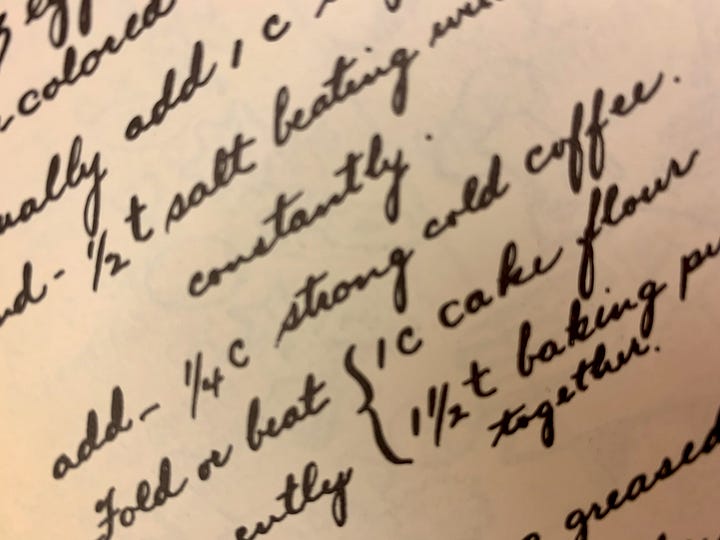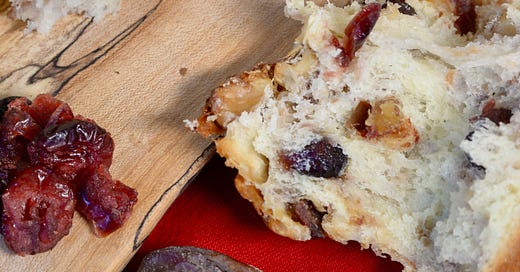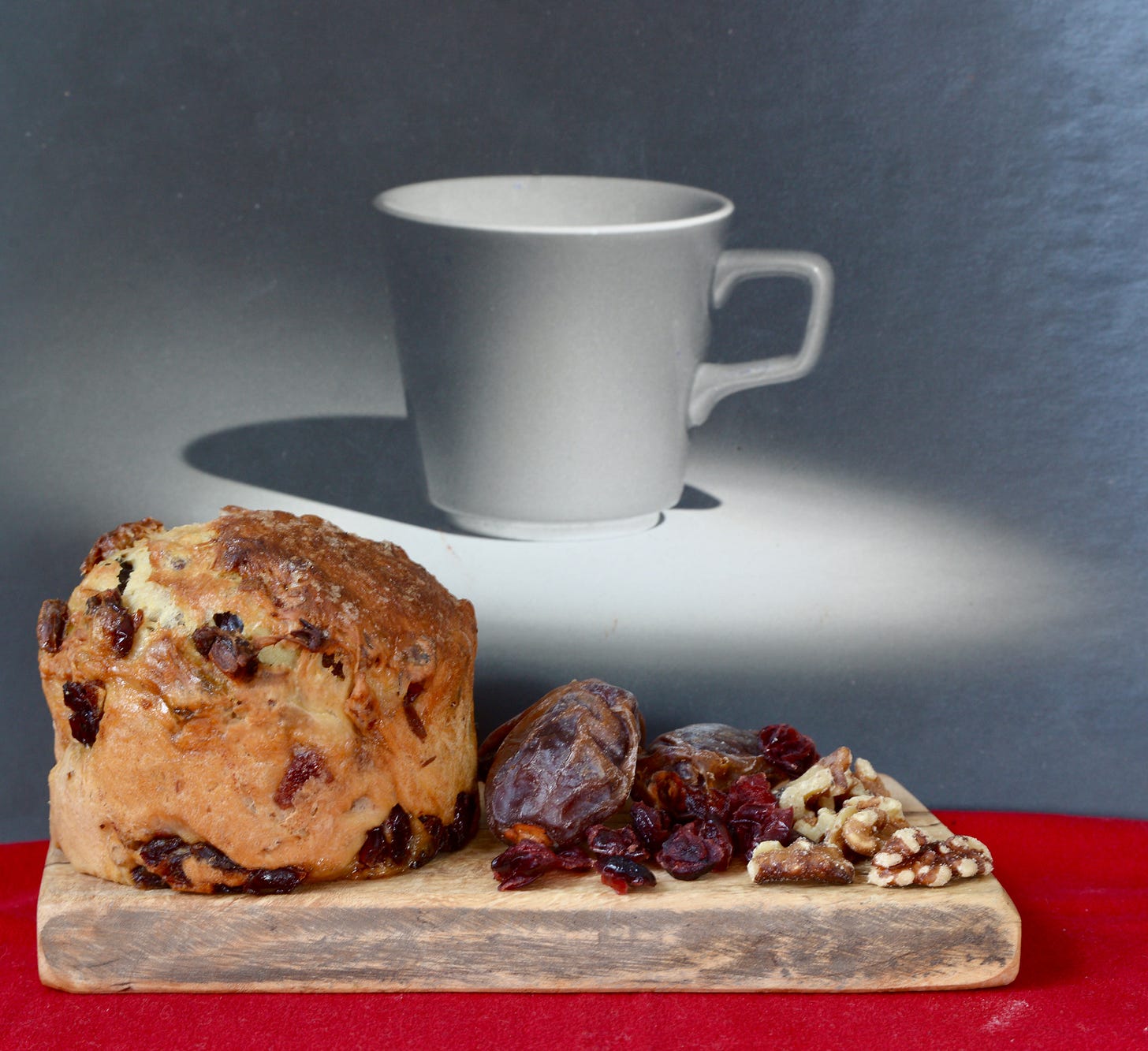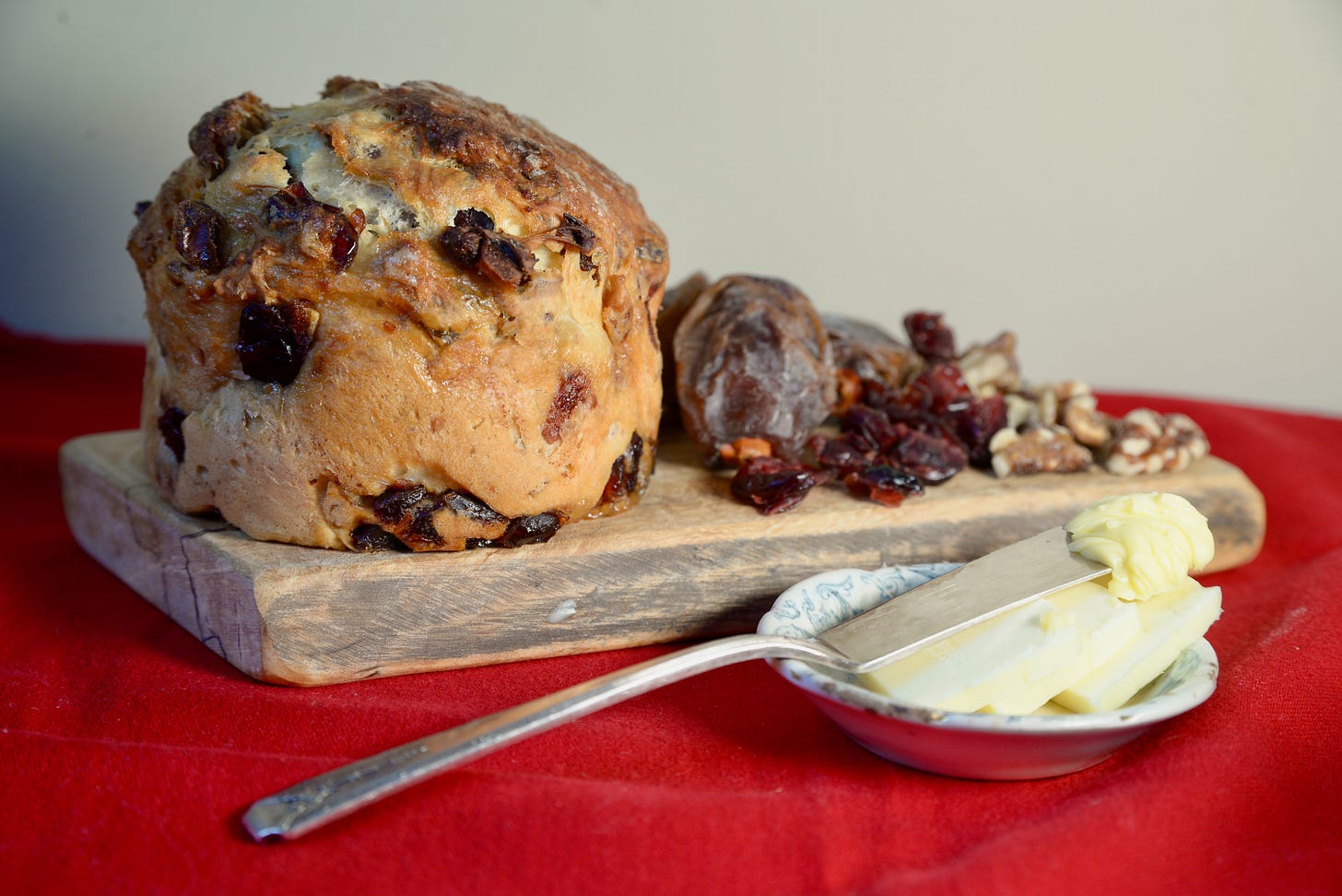Not Your Ordinary Coffee Cake
Big beautiful snowflakes are floating, swirling and drifting from the behemoth of a gray cloud that is the sky. The fire is flickering gently in the woodstove. And I have finally finished my leftovers from Thanksgiving last week. The stuffing was the first to go, followed by an even withdrawal by the brussel sprouts, mashed potatoes and butternut squash. The last of the turkey was made into a turkey chili last night and exited the scene as the main dinner dish.
I had a phenomenal strategy to manage all the leftover pie. I didn’t bring any home. I left it at my brother’s house, where it originated. Yes, it’s true, I did stop by a couple times for the purpose of a pie snack, but that was better than having it at home and snacking on pie. But even that is gone now and I feel myself wanting more. As overwhelming as all those leftovers were, I find that I don’t want to quit my extended Thanksgiving meal cold turkey (ha! See what I did there?).
And since beautiful snow is falling and the fire is keeping me company, it seems like a good day to bake. What’s going to fill my void of something tasty and comfortable?
Coffee cake.
What comes to mind when you think about coffee cake? A brown sugar streusel topping? A sour cream coffee cake with streusel in the middle as well as on top? Yeah, those are pretty standard ideas for me too. We recognize it as coffee cake because it is served or eaten with coffee, usually for breakfast, break or snack. It turns out these are well-Americanized ideas of coffee cake.
Tori Avey dives DEEP into a history of coffee cakes on her website, but I’m just going to touch on some of the highlights here. In the mid to late 1800’s German and Scandinavian immigrants brought to America a love of coffee, and their own traditional foods such as kaffeekuchen, blitzkuchen and krümelkuchen, which are yeasted coffee cakes, non-yeasted cakes and crumb cake. This is where streusel also made an appearance. Streusel means “to scatter,” which makes sense when you think about how you disperse it atop the cake batter. The British began naming the cakes based on what they were served with… tea cakes and coffee cakes, and eventually the naming method made its way to America.


For a time, coffee cakes were made with coffee as an ingredient. A handwritten 1970 copy of a Maplewood NJ local church cookbook that has mysteriously taken up residence on my shelf supports this. Eventually the coffee came to live in a mug next to the cake and that’s where it stayed. The most popular American coffee cake is the streusel topped (and layered) sour cream coffee cake. I do love this cake. But that is not what I’ll be baking today.
A few years ago I came across a recipe for a yeasted coffee cake on King Arthur’s website. It originated from a local restaurant, Osteria Pane E Salute in Woodstock, VT, that has since gone out of business, but there is a cookbook that remains in existence.
At the time, I was unfamiliar with the concept of a yeasted coffee cake, so I decided I needed to try it. This has since become one of my favorites. It’s a completely different adventure than the typical sour cream spongy cake with lumps of brown sugar topping. It’s soft and stretchy and amazing served warm with butter and sweet but not overly so. And it goes wonderfully, of course, with coffee.
Here is the recipe reduced to a four inch coffee cake, and here is how I made it happen. Heads up! You need to mix the starter and let it sit overnight. Plan ahead. The original recipe posted by King Arthur Baking for this Tuscan Coffee Cake can be found here.
ingredients
starter
24g bread flour
22.6g water
0.18g yeast
dough
All of the starter
30.4g lukewarm water
66g bread flour
11.4 room temperature butter
20g egg
5g sugar
1.2g yeast
1.6g salt
filling
22.6g chopped, toasted walnuts
22.6g chopped dates
25.6g dried sweetened cranberries
glaze
5g sugar
0.1g vanilla
~1g water
directions
Mix the starter ingredients in a bowl and let sit at room temperature overnight, about 12 hours.
Weigh all of the dough ingredients into a bowl, add the starter and mix until combined. Then start kneading. I did this by continuing to mix the dough with a spoon, stretching and pulling a little until I had a smooth elastic dough.
Place dough in a lightly greased bowl and let rise at room temperature until nearly doubled in bulk. Full disclosure: It was late. I was tired. I put mine in the fridge overnight.
Knead in the filling ingredients and place in the lightly greased pan you are going to bake with.
Let proof at room temperature for about an hour.
Preheat the oven to 3500F when proofing is nearly done.
Mix the glaze ingredients together and drizzle over the dough before putting it into the oven.
Bake for approximately 40 minutes. Keep an eye on it and tent it with foil if it browns too quickly. I added a tent after 20 minutes and took it off again for the last 5 minutes.
What came out was this giant muffin looking bread that seemed like it was confused about its identity. But tearing it open left no doubt that this was bread. The baked gluten strands held bits of date, walnut and cranberry in place while also stretching and ripping apart as a sign of its chewy goodness. The glaze created a nice thin crust that yielded a satisfying crunch when biting into it, and let you know it was sweet enough to be more than a bread, but not so sweet that it was too much beyond that. I suppose the only thing left to consider is, how do you take your coffee?







